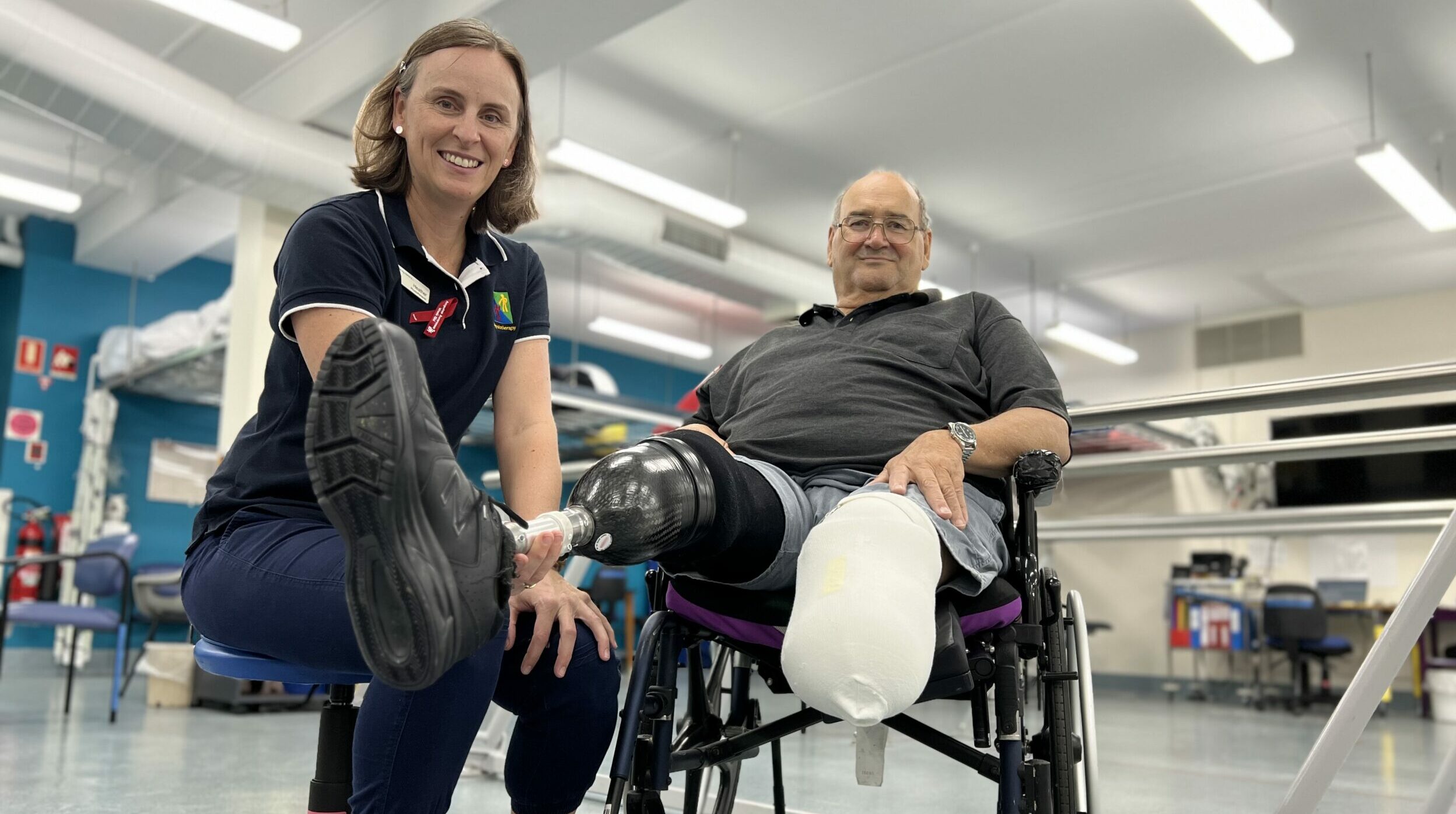Heather Batten recently went to eight countries in Europe on her Churchill Fellowship to to learn ways to improve the lives of Australians with an amputation. With more than 8000 lower limb amputations performed each year in Australia, an amputation is a life-changing event, yet Australia still has significant barriers for people when they return home to live in their community after an amputation.
On her Churchill Fellowship, Heather visited 14 rehabilitation facilities, in Denmark, England, Germany, Ireland, Netherlands, Norway, Scotland, and Sweden to observe different amputee rehabilitation models of care to understand how they support the transition process for patients, discharging from hospital to home.
“I visited public and privately funded facilities, and hospital and community programs, and I even participated in a Pilates class with Danish Wounded Warriors.”
Heather found that by comparing with the nations she went to, more funding could further improve hospital rehabilitation programs for amputees in Australia, to provide better staffing ratios, equipment and technology.
Heather said: Most of the physiotherapists I visited had responsibility for five patients, whereas at my facility and in Australia we look after more patients. Better staffing ratios meant that clinicians had more time to spend with their patients to individualise their rehabilitation programs so they can achieve their goals.”
“On my travels I observed state of the art amputee rehabilitation facilities and saw the benefits of incredible equipment such as; virtual reality treadmills, adjustable depth hydrotherapy pools, rockclimbing walls, wheelchair treadmills, immersive cycling devices, smart balance machines and outdoor mobility areas which all can benefit people enormously in their recovery and rehabilitation.”
“In Australia, we still have a significant barrier between health and community services, and now between NDIS, health and community. Some countries, like Sweden, have an integrated system, where funding and health records are all linked, which provides much more coordinated care for patients.”
“While I didn’t find any place that was the “holy grail” of amputee rehabilitation, each place I visited overseas had novel ideas that Australia can learn from and incorporate into our rehabilitation programs. Some health facilities co-share gymnasiums with the local community where the hospital uses the space during the day, and community sport uses it at night. This is a great use of resources and mixes people in the hospital with people in the community.”
“It was interesting seeing how culture influences health programs. Parts of Europe are less risk averse than Australia and really ensure that patients maintain independence during their hospital stay. One facility in Norway had a firepit where patients could relax with their families, including having access to an axe and firewood! Maintaining patient’s independence makes it easier for patients to manage their own health care once they return home.”
“I was really impressed by how some countries encourage and ensure adaptive sport is easily accessible (eg via apps, Peer Support and Sports Therapists in hospital) and available to everyone, not just people who are wanting to pursue paralympic pathways. Sport therapy appointments had equal standing with Occupational Therapist and Physiotherapy appointments at one rehab facility I visited in the Netherlands, and they also ensured all the patients had opportunity to get back riding bikes (even if they need some adapation like using a three wheel bike, or Power Assist). With the 2032 Paralympics coming to Brisbane, we have a brilliant opportunity to improve opportunities for people with disabilities to access sport and physical activities,”
Limited programs exist in Australia to help patients adjust to living back at home and adapt to life with an amputation.
“In Queensland, there is a specialised transition program for people with a spinal cord or brain injury after they leave hospital. My goal is to develop a specialised transition program for people with amputation.“
”People with lower limb amputation need to have better support when they leave the hospital and adjust to their new lives as they face many barriers, such as the physical environment, social support and prosthetic function,” said Heather.
Heather’s findings will be shared with clinicians, and policy makers, as well as Amputees Qld and Limbs4Life, who are advocacy and peer support groups for people with amputation in Australia.
Read Heather’s Churchill Fellowship project report here.
